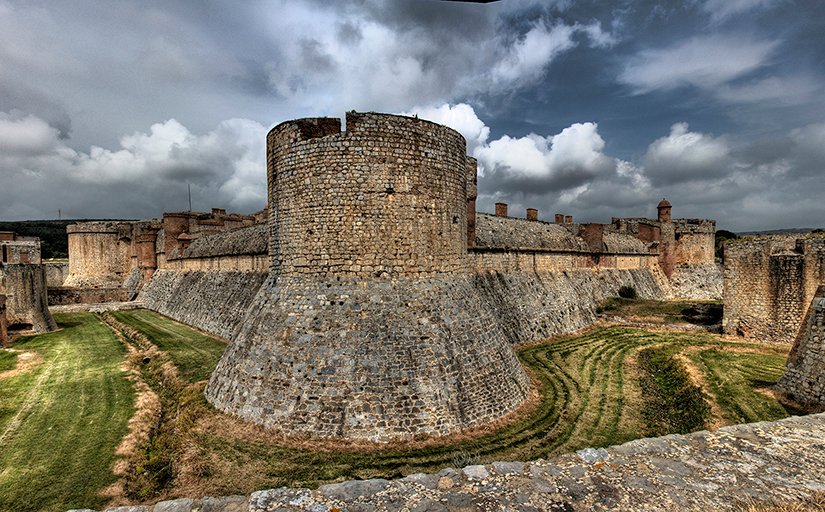Hello ladies and gents this is the Viking telling you that today we are talking about
CASTELL DE SALSES
Castell de Salses is a modern castle in the municipality of Salses, in the region of Rosselló (northern Catalonia). It is the third, from a chronological point of view, of the castles of Salses, after the Castell Vell and the Castell Reial.
This castle is today the Museum of Sauce History. It is located to the north of the town of the same name, at the foot of Les Corberes, guarding the plain of Roussillon and the old road that went from Perpignan to Narbonne following the old Via Domícia. It represents the historical boundary, the old border between the kingdom of France and the Crown of Aragon before the consequent annexation to the Treaty of the Pyrenees in 1659. It also represents the concrete boundary between Occitania and the Catalan Countries, recently resumed with the construction of the Porta dels Països Catalans.
The Castle
The first document that mentions it is from 1047, the year in which it belonged to the counts of Roussillon. However, Alfons el Cast, Count of Barcelona and King of Aragon, who had inherited the county of Rosselló and, therefore, of the castle of Salses, commissioned the abbot of La Grassa to found the foundation, in place of the old vila de Salses, of a new town to which it would grant privileges and franchises.
In 1285 he resisted the siege, heroically but in vain, on the crusaders of Philip III of France during the Crusade against the Crown of Aragon. However, neither of the above two references refers to the current castle, but to its predecessors, the Old Castle and the Royal Castle.
For the current fortress, built between 1497 and 1503, the Castilian builder Ramirez was inspired by the tradition of the castles of Castile incorporating all the modernities of the artillery of the time, which translates into the collapse of the ground and the use of bastions capable of responding to the technology of artillery of the early sixteenth century, so it had great means. The plan is rectangular of 115 m x 90, divided into three concentric spaces and defended by a moat 15 m wide and 7 deep.
Inner courtyards
Inside the enclosure there is a place of arms, the governor's house, the chapel (of San Sebastián, austere, with a pediment and some pilasters in place of the altar), the prison, the infirmary, with a room also dedicated in the chapel, the paintings and the palace of the king of Aragon, which forms the tower of homage to the square.
The construction of the new castle was ordered by Ferdinand the Catholic in order to strengthen the border of Catalonia in the face of the French monarchy. Earlier, in 1496 the old castle and town had been razed and looted by French troops following the orders of the Marshal of Saint-André.
The works were completed in 1505, but during the reign of Charles V, which became one of the key points in the constant military clashes with France, it was endowed with new and important defenses.
During the Thirty Years' War, in 1639 the garrison surrendered to the army of Louis XIII. The following year the lieutenant of Catalonia, Dalmau III of Queralt, count of Santa Coloma, obtained the surrender of the French garrison commanded by the governor Baron d'Espenan. Despite its success for the Castilian armies, aided by the Catalan people, it did not prevent the definitive rupture between the Principality and Philip IV of Castile, which culminated a few months later (1640) in the War of the Reapers.
The French besieged the castle again and in 1642 finally gained control of this fortress. With the Treaty of the Pyrenees (1659) to settle the war between the Kingdom of France and the Spanish Monarchy, the Franco-Spanish border was moved about 50 km to the south and lost much of its military importance.
However, Marshal Vauban, who initially wanted to destroy it because of its position at the foot of the mountain, preserved it and improved it. It served as a prison, in particular for two accomplices of the famous Marquise de Brinvilliers, as a military garrison for reinforcements in the frontier fortresses, as well as a place of provision for French armies.
Later, it became a powder magazine and, during the Spanish Civil War, was used as a refuge.

Comments
Post a Comment